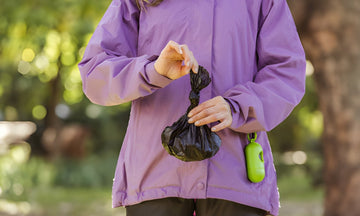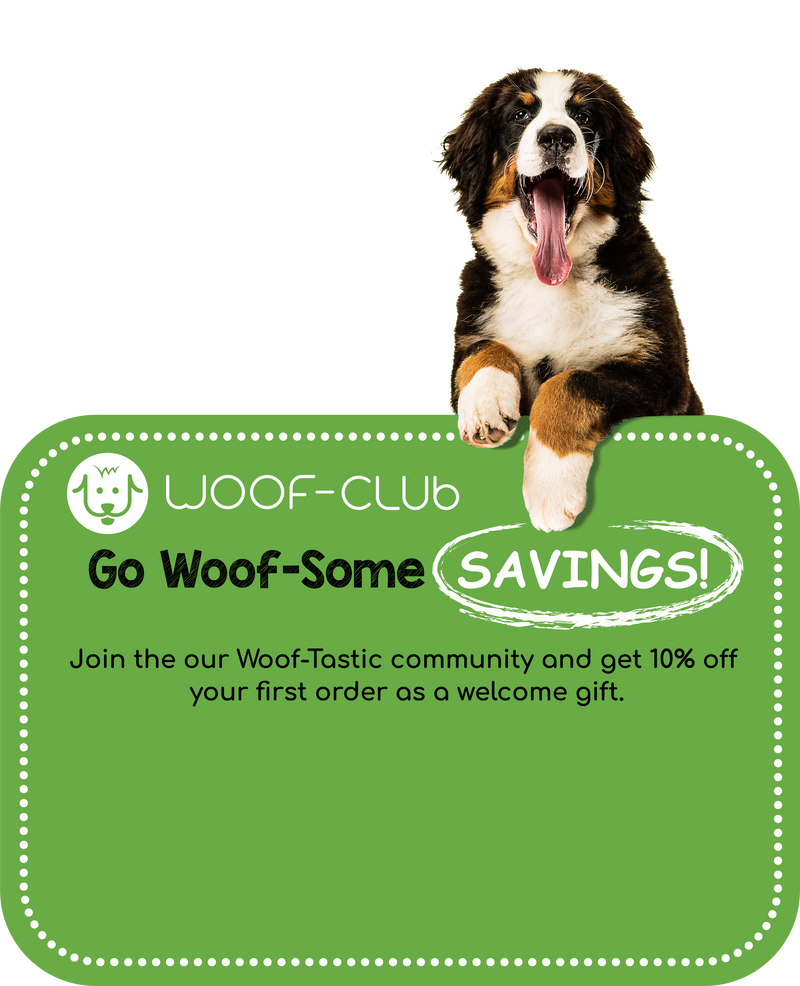In the US, there are an estimated 89.7 million dogs, according to the American Pet Products Association, making it one of the largest dog-loving countries in the world. Similarly, the United Kingdom additionally has around 12.5 million dogs, as pronounced by Statista. The result is a giant variety of puppies that require daily care, including taking walks, feeding, and, of course, waste control. However, the problem of dog waste, particularly in urban settings, has become increasingly complicated.
As towns become increasingly densely populated and dog ownership continues to rise, urban sanitation challenges, particularly those related to canine waste, have led to unsanitary conditions and public health issues. Improper disposal of canine waste has become a significant challenge in maintaining clean streets and preventing the spread of diseases that can be transmitted through animal waste.
The History of Dogs and Waste Management
Historically, puppies have been considered outside animals, living in rural areas where they controlled their waste independently. However, the growth of urban areas and the trend of puppies dwelling as family pets in towns have created new problems for waste control. In the past, dog owners did not face the same pressures to manage their pets' waste, as they were not confined to city spaces. However, with the upward push of urbanisation, the accumulation of dog waste on sidewalks and public spaces began to pose a widespread public health issue.
Over time, cities have sought solutions for canine waste management to prevent the spread of disease, maintain clean urban spaces, and promote responsible pet ownership.
The Rise of Dog Waste Issues in New York City

In the 1970s, New York City faced a growing issue with canine waste on its streets, prompting political action. Michael Brandow’s book, "New York’s Poop Scoop Law: Dogs, the Dirt, and Due Process," offers a deep dive into the legal, social, and public health implications of the issue. It discusses the implementation of the "Poop Scoop Law," which requires canine owners to clean up after their pets in public areas, a measure aimed at improving sanitation and public health.
Brandow examines the initial resistance and eventual popularity of this regulation, its impact on dog owners, and how it addresses growing concerns about public health, cleanliness, and urbanisation.
The Origin of "Curb Your Dog"
As city areas expanded and the number of dog owners increased, problems with waste on public sidewalks and streets became more significant. In response, the phrase Curb Your Dog was introduced to address these issues. This phrase encourages dog owners to guide their pets to specific areas, such as gutters or curbs, where waste can be managed more effectively, preventing contamination of sidewalks and public areas.
By guiding dogs to these areas, towns aimed to mitigate the spread of waste, making urban areas cleaner and maintaining public health standards. "Curb Your Dog" signs have become common in many cities around the world, serving as a reminder for dog owners to consider their pets' waste.
The "Pooper Scooper Law" and Its Impact

The implementation of the Pooper Scooper Law in New York City (officially referred to as Local Law 69) by Mayor Ed Koch in 1978 was a pivotal moment in canine waste control history. The law required canine owners to leash their pets in public areas, aiming to create a purer, safer environment for citizens and traffic.
This law was met with blended reactions, with a few suggesting extreme measures like banning puppies from multi-unit homes or limiting them from public assets altogether. However, the Pooper Scooper Law eventually gained significant recognition and has become a model for other towns and municipalities throughout the US. Despite its success, enforcement remains a challenge, and many cities continue to rely on education and public awareness campaigns to address the issue.
Current Challenges with Dog Waste in the UK
In the UK, the issue of dog waste remains a persistent problem. Many dog owners overlook the responsibility of properly disposing of their pets’ waste, which can result in unsanitary conditions. In a few areas of the United Kingdom, including Todmorden in West Yorkshire, citizens have become frustrated with the growing number of plastic bags filled with dog waste that can be found on trees, fences, and timber. These irresponsible actions have led to visible pollution and pose a significant environmental threat.
In response, a few neighbourhood companies have employed innovative techniques to draw attention to the problem, including decorating lumber with plastic bags filled with faeces and urging the public to take responsibility for proper waste disposal.
The Pink Dog Poo Initiative
A few communities have started spray-painting canine waste purple in a unique attempt to raise awareness about its irresponsible disposal. This bold initiative has been supported by organisations like Plastic Free Falmouth, which aim to focus on the environmental and cleanliness issues resulting from dog owners who fail to clean up after their pets.
By spray-painting dog waste, the initiative makes it more visible and encourages canine owners to take responsibility for their messes. The initiative also aims to inspire others to properly dispose of their dogs' waste and reduce its impact on the environment.
The Role of DNA in Dog Waste Management
A progressive approach to dog waste control is the PooPrints program, which uses DNA registration to hold canine owners accountable for not cleaning up after their pets. This application is part of a rising trend that uses machine learning to generate music and address canine waste issues.
By having canine owners register their pets' DNA, groups can identify which dog is responsible for a specific waste pattern. This software has been proven effective in encouraging puppy owners to take responsibility for their dogs' waste, resulting in cleaner neighbourhoods and more responsible pet ownership.
Dog Waste Removal Services

Volunteers are seeking ways to make dog owners more responsible, similar to the approach used by PooPrints. In the US, several corporations and services that specialise in removing dog waste help communities maintain cleanliness. One such provider is POOP 91, which offers expert puppy waste removal for residential, industrial, and network areas. POOP 911 provides daily cleansing schedules and offers services for public events to ensure that outdoor spaces remain clean throughout large gatherings.
In addition to waste elimination, many of these services also include deodorising and sanitising outdoor areas to reduce health risks and unpleasant odours.
Promoting Awareness Among Dog Owners
There are several packages devoted to teaching dog owners about the importance of cleaning up after their pets. From neighbourhood community efforts to national campaigns, these programs aim to raise awareness about the environmental, health, and social issues associated with irresponsible dog ownership. However, the key to creating a lasting alternative is for each canine owner to take personal responsibility for their actions and ensure their puppy’s waste is disposed of properly.
Eco-Friendly Solutions: Woofpanion Bags
One way to make cleaning up after puppies simpler and more eco-friendly is by using Woofpanion bags. This biodegradable bag is designed to simplify the cleanup process while minimising environmental impacts. Using those eco-friendly bags, canine owners can contribute to a cleaner environment, reduce plastic waste, and make the process of cleaning up after their pets more convenient and efficient.
FAQs
Why is dog waste a problem in city areas?
Dog waste in urban areas leads to unsanitary conditions, health risks, and environmental pollution. Without proper disposal, waste can spread illnesses and create an ugly environment for residents.
What is the Pooper Scooper Law?
The Pooper Scooper Law requires dog owners to clean up after their pets in public spaces. It was first introduced in New York City to address canine waste issues and enhance public cleanliness.
How can I help manage canine waste in my network?
You can help by picking up after your dog, encouraging others to do the same, and supporting initiatives that raise awareness about proper waste disposal.
What are PooPrints?
PooPrints is a DNA-based program that enables pet owners to identify those who fail to clean up after their pets. By registering a dog’s DNA, groups can track waste and hold proprietors responsible.
How does Woofpanion baggage assist with canine waste control?
Woofpanion luggage is green and designed to make cleaning up after puppies less complicated, more convenient, and environmentally friendly.


'/%3E%3Ccircle cx='60' cy='45' r='18' fill='%23f4c2a1'/%3E%3Cpath d='M42 75 Q60 90 78 75 Q78 95 60 100 Q42 95 42 75' fill='%23f4c2a1'/%3E%3Cpath d='M45 40 Q60 25 75 40 Q75 35 60 30 Q45 35 45 40' fill='%23d4a574'/%3E%3Ccircle cx='52' cy='50' r='2' fill='%23333'/%3E%3Ccircle cx='68' cy='50' r='2' fill='%23333'/%3E%3Cpath d='M55 58 Q60 62 65 58' stroke='%23333' stroke-width='1.5' fill='none'/%3E%3C/svg%3E)



